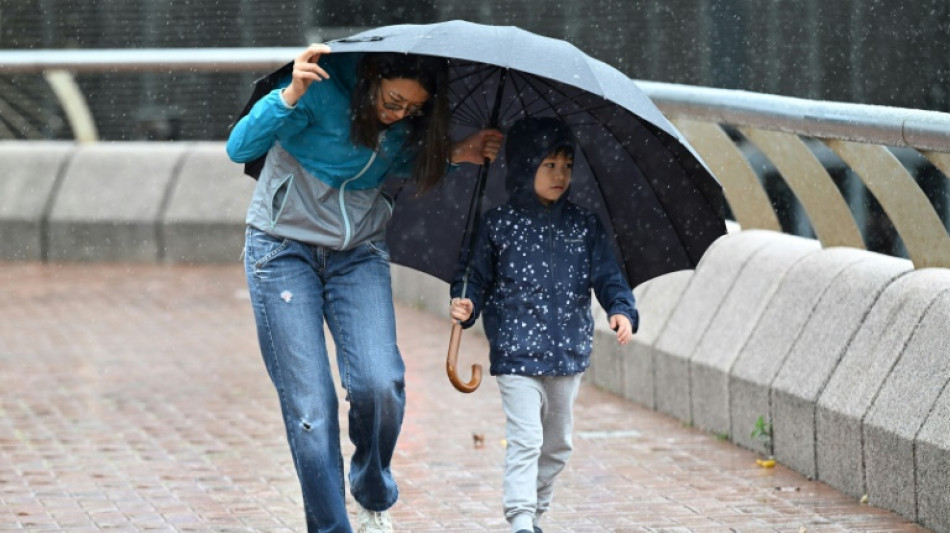
RBGPF
1.6500

Hong Kong issued its third-highest storm warning signal on Sunday, prompting the closure of some transport services and schools, as Typhoon Koinu skirted the financial hub, bringing rains and powerful gusts.
Koinu comes just a month after the financial hub was lashed by Typhoon Saola, which triggered Hong Kong's highest "T10" storm alert.
A week after that, the city experienced its highest rainfall in nearly 140 years, flooding subway stations and malls, and causing landslides.
Hong Kong's weather observatory on Sunday warned of strong winds and intense rain bands as Koinu moved towards the Pearl River Estuary and was expected to skirt as close as 70 kilometres (43 miles) south of Hong Kong before midnight.
"Koinu is a mature typhoon with its eyewall edging closer to the seas south of the territory," said the Hong Kong Observatory, warning the public to avoid low-lying areas in case of a storm surge.
It added that it would assess the need to issue higher storm warning signals based on wind speeds.
Typhoon Koinu's "T8" signal -- the third-highest in Hong Kong's warning system -- is triggered when a storm's sustained wind speed goes up to 117 kilometres (72 miles) per hour.
The storm's maximum sustained wind speed was observed at 145 kilometres (90 miles) per hour.
Schools, daycare centres, cargo terminals, ferries and buses suspended operations for the day or for the afternoon.
Around 90 flights were cancelled and 130 others delayed throughout the day due to the storm, according to Hong Kong's Airport Authority.
Hong Kong's government received reports of four fallen trees and two people wounded during the typhoon on Sunday afternoon.
Before moving to Hong Kong, Koinu had grazed nearby Taiwan, bringing torrential rain and record-breaking winds to its outlying Orchid Island.
The storm left at least one dead, and knocked out the power to hundreds of thousands of homes.
Southern China is frequently hit during summer and autumn months by typhoons that form in the warm oceans east of the Philippines and then travel west.
But climate change has made tropical storms more unpredictable while increasing their intensity -- bringing more rain and stronger gusts that lead to flash floods and coastal damage, experts say.
D.Naveed--DT